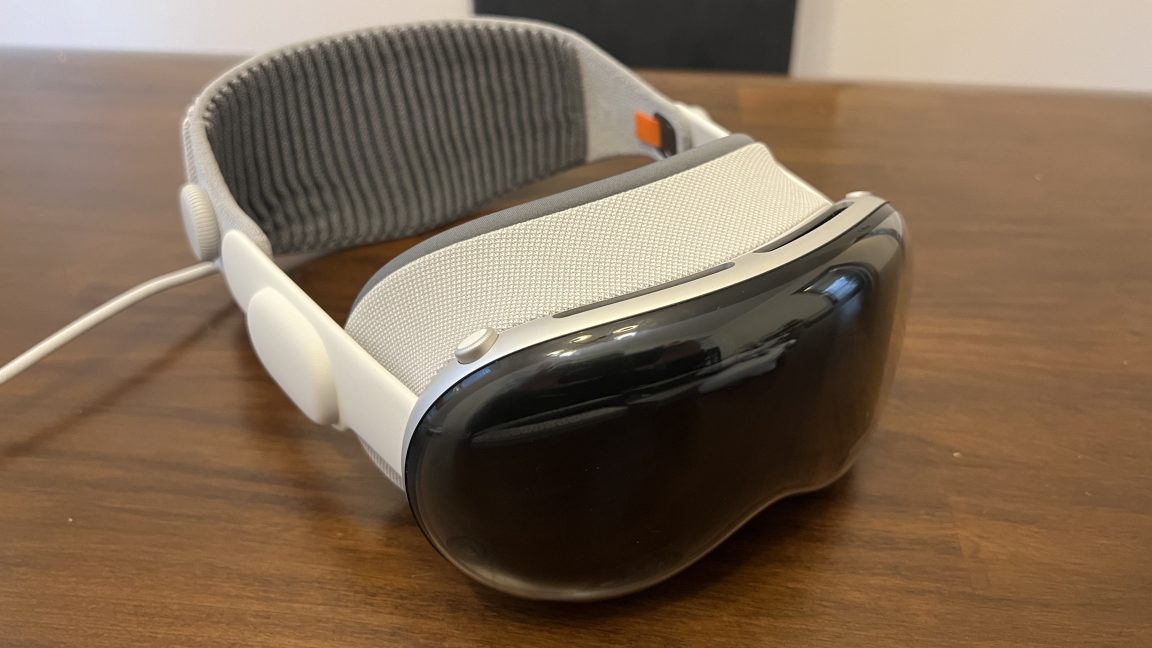
Credit: Samuel Axon
Apple's Vision Pro hasn't made huge waves in the market, partly due to its steep price and "everything including the kitchen sink" feature set. But Apple hasn't given up on the platform yet; a prominent analyst with a strong record of accurate projections for Apple's product lineup, Ming-Chi Kuo, published a roadmap that shows Apple beginning to roll out a new wave of mixed reality devices in 2027.
Kuo says Apple still "views head-mounted devices as the next major trend in consumer electronics." We already knew Apple CEO Tim Cook felt that way before the Vision Pro came out, but continued investment seems to indicate that Apple hasn't been dissuaded by the relatively low sales of the Vision Pro as a niche product. However, Kuo notes that "Apple is not expected to launch any new head-mounted devices in 2026."
Launches are planned for 2027 and 2028, though. You might expect a sort of Vision Pro 2, and Kuo believes that's coming—but not until at least mid-2028. When it arrives, it's expected to jump from Apple's M2 system-on-a-chip to the M5, which should offer a significant performance leap. Based on his supply line sources, Kuo believes the new headset will feature a completely new design that is "significantly" lighter than the first Vision Pro and a lower price point.
However, Kuo also says we may see a sort of Vision Pro 1.5 going into production in Q3 2025—that means a Vision Pro that is identical to the current one, but with just the bump from the M2 to M5—no new design.
Apple is also reportedly planning a "Vision Air" product, with production expected to start in Q3 2027. Kuo says it will be more than 40 percent lighter than the first-generation Vision Pro, and that it will include Apple's flagship iPhone processor instead the more robust Mac processor found in the Vision Pro—all at a "significantly lower price than Vision Pro." The big weight reduction is "achieved through glass-to-plastic replacement, extensive magnesium alloy use (titanium alloy deemed too expensive), and reduced sensor count."
True smart glasses in 2027
The Vision Pro (along with the planned Vision Air) is a fully immersive VR headset that supports augmented reality by displaying the wearer's surroundings on the internal screens based on what's captured by 3D cameras on the outside of the device. That allows for some neat applications, but it also means the device is bulky and impractical to wear in public.
The real dream for many is smart glasses that are almost indistinguishable from normal glasses, but which display some of the same AR content as the Vision Pro on transparent lenses instead of via a camera-to-screen pipeline.
Apple is also planning to roll that out, Kuo says. But first, mass production of display-free "Ray-Ban-like" glasses is scheduled for Q2 2027, and Kuo claims Apple plans to ship between 3 million and 5 million units through 2027, suggesting the company expects this form factor to make a much bigger impact than the Vision Pro's VR-like HMD approach.
The glasses would have a "voice control and gesture recognition user interface" but no display functionality at all. Instead, "core features include: audio playback, camera, video recording, and AI environmental sensing."
The actual AR glasses would come later, in 2028.

-
 C114 Communication Network
C114 Communication Network -
 Communication Home
Communication Home


